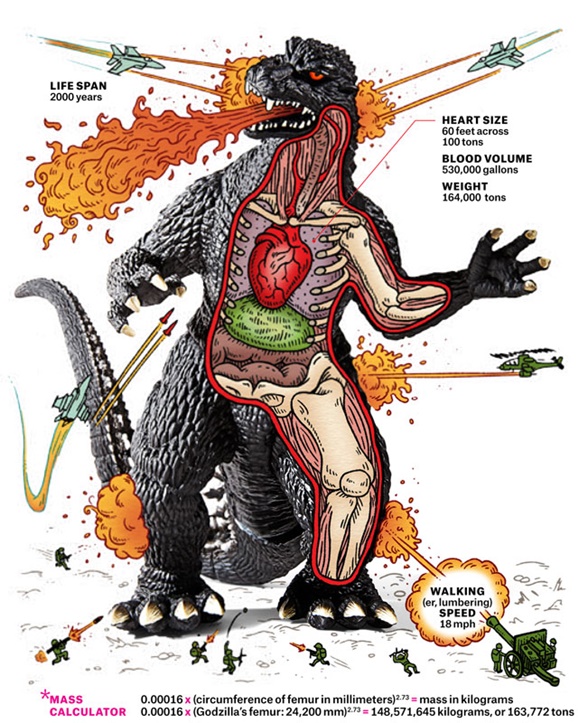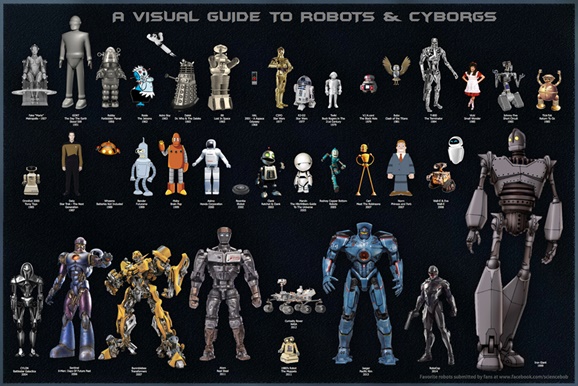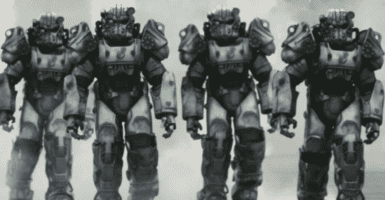Godzilla Anatomy And A Handy Visual Guide To Robots
This article is more than 2 years old
 Much like the Spanish Inquisition, nobody expects a kaiju rampage. Well, except maybe the people in Tokyo. If they aren’t expecting a kaiju rampage 24/7, they are clearly not learning from previous experience. But regardless of whether you hang your hat in Japan or not, you could always benefit from boning up on giant monster anatomy, just in case you wind up being the plucky everyman tasked with bringing one of the big brutes down. The handy-dandy Godzilla anatomy chart above should be a perfect place to begin your education.
Much like the Spanish Inquisition, nobody expects a kaiju rampage. Well, except maybe the people in Tokyo. If they aren’t expecting a kaiju rampage 24/7, they are clearly not learning from previous experience. But regardless of whether you hang your hat in Japan or not, you could always benefit from boning up on giant monster anatomy, just in case you wind up being the plucky everyman tasked with bringing one of the big brutes down. The handy-dandy Godzilla anatomy chart above should be a perfect place to begin your education.
The anatomy lesson comes courtesy of Popular Mechanics (and illustrator Andrew Rae), who picked the brains of scientists to determine just what would have to be going on inside Godzilla to keep the big guy going. They even take into account that he’s grown over the years, now standing 30 stories tall and weighing “as much as a cruise ship.” Of course, it’s somewhat moot since a creature the size of Godzilla is impossible: “It would overheat, its organs would implode, and it would need to mainline butter to get enough calories.” Leave it to the scientists to ruin everybody’s fun, the party poopers.
Popular Mechanics speculates that Godzilla would weigh in at around 164,000 tons, which is quite a bit above the theoretical weight limit for land animals, which tops out between 110 – 1100 tons. His bones would also need to be ridiculously strong to support his weight — they’d be bearing 20 times the force of the bones of a T. rex. His cartilage would also need to be 12 times stronger than a human’s.
My only complaint is that they don’t address his atomic breath. What sort of half-assed Godzilla anatomy lesson overlooks the atomic breath?
But let’s say you’re up against a mess of robots rather than one really big kaiju? Well, not every robot is created equal. Not all of them want to kill all humans, but determining where they stand on that issue should be your top priority in the face of a robot uprising. Thankfully “Science Bob” Pflugfelder has put together the following visual guide to some famous robots, cyborgs, mechs, and the like. (Click the image for a larger version.)

They aren’t to scale, as you probably noticed from the fact that 2014 RoboCop is shown two-thirds the height of Pacific Rim’s Gipsy Danger. You can see an even more ginormous version of the poster on Bob’s site.












